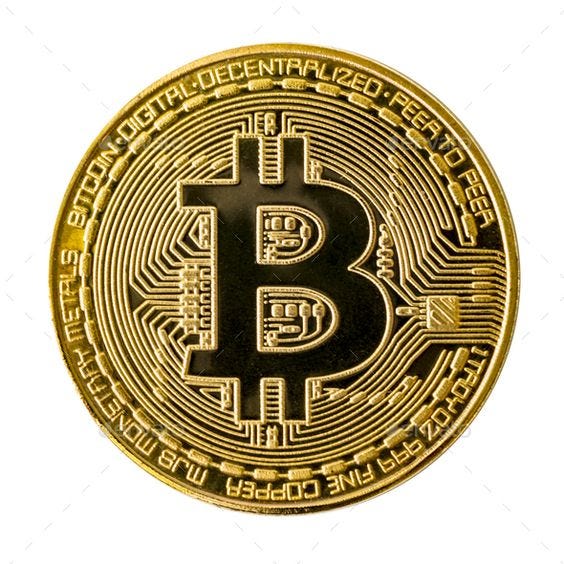From Color Block Outfits to Blockchain…

Well, my eyes were tired of looking at blocks of codes. So I decided to find some fresh color block ideas for my next summer post-Covid/post-pregnancy wardrobe.

As usual a website leads you to another one, some ads remind you of some earlier research and you finally land in front of everything but cool color-block outfits!
I ended up in front of a website where I was able to buy clothing with Bitcoin.

We all heard about Bitcoin but do we really know what it is? There is an excited crowd of believers out there including Elon Musk. Ok, that was not even the point, but as a geek newbie, I was like, how is it even possible that people trust this currency? Sorry, Cryptocurrency. As we know every money relies on trust people give to it, I started wondering what was the ultimate parameter which allows such trust.
First thing first, what is Bitcoin? Bitcoin is a cryptocurrency, like Litecoin, Monero, and Zcash which was created in 2008 by an unknown person or group of people using the name Satoshi Nakamoto.

Bitcoin is seen as a speculative instrument, it was designed as a decentralized payment method, enabling holders to manage their own finances and make purchases without relying on third party (Banks, governments etc…). Transactions are verified by network nodes through cryptography and recorded in a public distributed ledger called a blockchain.
As a software engineering student, I had to deal with databases, so I started wondering about the principle of blockchain technology and how this could severely impact the world we live in today! I got very excited and I basically started to dig and discover that it was the truth generated by its technology concept.
“Blockchain technology has the potential to fundamentally change the way business is conducted, and to transform the foundations of our economic and social systems.” This is how MIT introduces its online classes about Blockchain.
But how the heck ?! What is a Blockchain ?!
The blockchain data structure is a back-linked list of blocks of transactions, which is ordered, linked using cryptography. It can be stored as a flat file or in a simple database. Each block is identifiable by a cryptographic hash.
So, each block contains a cryptographic hash of the previous block, a timestamp, and transaction data. A blockchain is resistant to the modification of its data. This is because once recorded, the data in any given block cannot be altered retroactively without alteration of all subsequent blocks.
The blockchain was also invented by this enigmatic Satoshi Nakamoto in 2008 to serve as the public transaction ledger of the cryptocurrency bitcoin.
Let’s rethink this. At its core, a blockchain is not so different from a regular database. It stores information on things that happened in the past, but with unique attributes.
The most important feature of a blockchain is decentralization. Copies of a blockchain ledger are stored and updated on computers all over the world, meaning that there is no central authority to make decisions and no single party has control over what information goes in.

Many different parties store exact copies of the same ledger, so the majority has to agree on the information being added.
It has an ‘Add-only’ concept, meaning you can’t edit what’s already there, you can just add information and new information can’t conflict with what’s already been added
Information is able to be accessed and replicated by everybody on the network
The hash is like the block’s fingerprint — a unique string of numbers that identifies each block. The numbers are automatically calculated based on the information stored in the block. If you change the information in the block you change the hash, and therefore the block’s identity. The hash of the previous block also sits in each block, which is what creates the chain of blocks, and is what makes a cryptocurrency like Bitcoin so secure.
If you alter it, it breaks.
On average, the hash for a block is found every 10 minutes by computers constantly guessing random numbers and seeing if one fits. This process is called ‘proof-of-work’ (PoW), and is done by powerful computers called miners.
To fake that transaction, we would need to get access to over 50% of the computers and repeat the mining process for all the ledgers we control. Which makes it extremely difficult to fraud with today’s technology. By the time we did, the rest of the network would notice. You would either be led to the door of the network or the trust in the concerned affected data will be dead.
This is why this technology is considered “thrusted”.
With the possibility of keeping track of data addition with its author identity, real transparency of product origin and production process is possible or should I say traceable! Isn’t it extraordinary? Now we could actually check if a company is not doing some fake greenwashing, isn’ fabulous?! I got fascinated, so fascinated that I continued digging and discovered a all new world and company I wish I could work for like Provenance.
“Provenance company is pioneering a new movement along with many others around the world. A movement that demands more open, accurate and accessible knowledge about the things we make, grow, buy, own and sell”.
Knowing that some “Tech knights”, are fighting for a better world and my well-being comforted me so much!! Supporting established groups to go through this ethical digital transformation, could it be called Tech Activism? I have no idea but how inspiring!
Here are some idea of how the blockchain technology could revolutionize several industries:
In the beauty industry?

One of the major focuses today is transparency. Because it is complicated to illustrate to any prospects or customers the veracity of any “clean, vegan or green’’ claim, beauty brands are relying more and more on blockchain in order to improve consumer truth.
In the food industry ?

Want to know if those apples are actually organic? What about his steak? The ability to instantaneously trace the entire lifecycle of food products from origin through every point of contact on its journey to the consumer bolsters credibility, efficiency, and safety.
In the fashion industry?








Is that diamond ring or clothing sourced ethically? Putting goods like these on the blockchain would allow consumers and businesses to gain greater transparency on the lifecycle of their products. Companies could work more effectively against counterfeit.
In government?

Governments could use blockchains to implement secure and accurate voting, public record-keeping, citizen identification (IDs), and border control.
Within the Healthcare industry?

Medical records are notoriously inaccurate and difficult to transfer. If they were hosted on a blockchain they would be secure, accurate, and easily accessible by approved parties.
In the Insurance industry?

No more calling up and hassling your insurer for weeks before getting your payout. With the implementation of smart contracts on the blockchain, insurers would be able to instantly accept and payout claims to customers based on predefined rules.
Well, as you can see I did not find the right block color outfit but I was surprisingly enthusiastic that some Creative Tech people t were passionate about allowing us to check if companies were doing things right!
Source : voguebusiness, Cruzlaw, consensys, fashionunited, thenextweb, asiablockchainreview, digitalcommons, wikipedia, provenance
